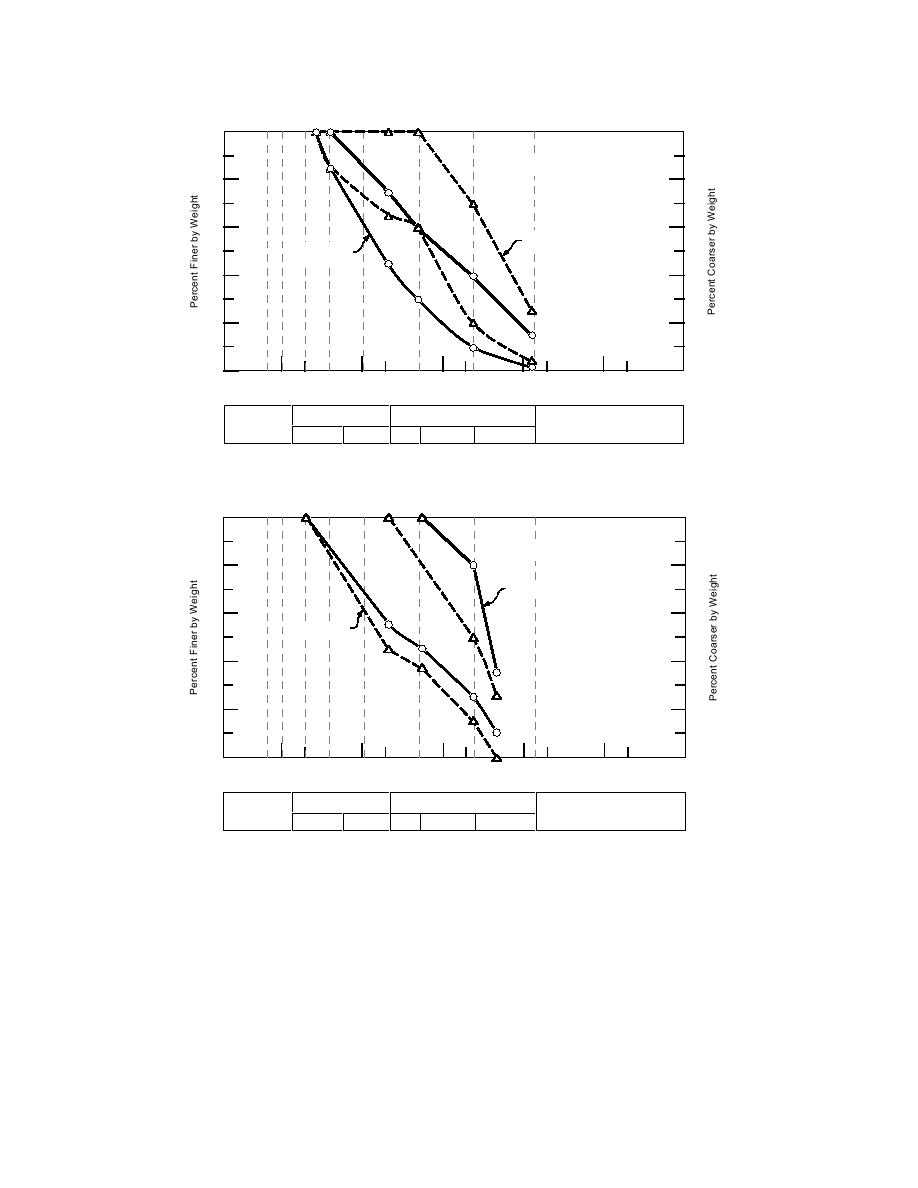
U.S. Standard Sieve Numbers
Hydrometer
6" 4"
2"
1"
10
40
200
3/8"
100
0
P-213 Sand-Clay Base Course
80
20
60
40
Gradation A
40
60
20
80
100
0
100
10
1
0.1
0.01
0.001
Grain Size (mm)
Gravel
Sand
Cobbles
Silt or Clay
Coarse
Fine
C'rse
Medium
Fine
f. P-213 sand clay base course.
U.S. Standard Sieve Numbers
Hydrometer
6" 4"
2"
1"
10
40
200
3/8"
100
0
P-304 Cement Treated Base Course
80
20
60
40
Gradation A
40
60
20
80
100
0
100
10
1
0.1
0.01
0.001
Grain Size (mm)
Gravel
Sand
Cobbles
Silt or Clay
Coarse
Fine
C'rse
Medium
Fine
g. P-304 cement-treated base course.
Figure 1 (cont'd).
tendency to "air slack" or undergo chemical
and magnesium carbonates is 95%. The liquid lim-
it is less than or equal to 35% and the PI ≤ 6%. All
changes when exposed to the environment. If
oolitic (softer variety of limestone) lime rock is
fine materials used are obtained from the crushing
used, then the minimum amount of either calci-
operation. The allowable gradation is that 100%
um or magnesium carbonate present is 70%. The
passes the 90-mm (3.5-in.) sieve and 50 to 100%
amount of iron and aluminum oxide has to be less
passes the 19-mm (0.75-in.) sieve.
than 2%. The minimum combined amount of car-
Limestone is a sedimentary rock made from
bonates, oxides, and silica is 97%. This material
predominantly calcite (CaCO3). So, surface water
also has to be nonplastic. If other types of lime
entering into the base course can react with the
rock are used, the minimum amount of calcium
limestone to form a weak acid that then attacks it.
5



 Previous Page
Previous Page
